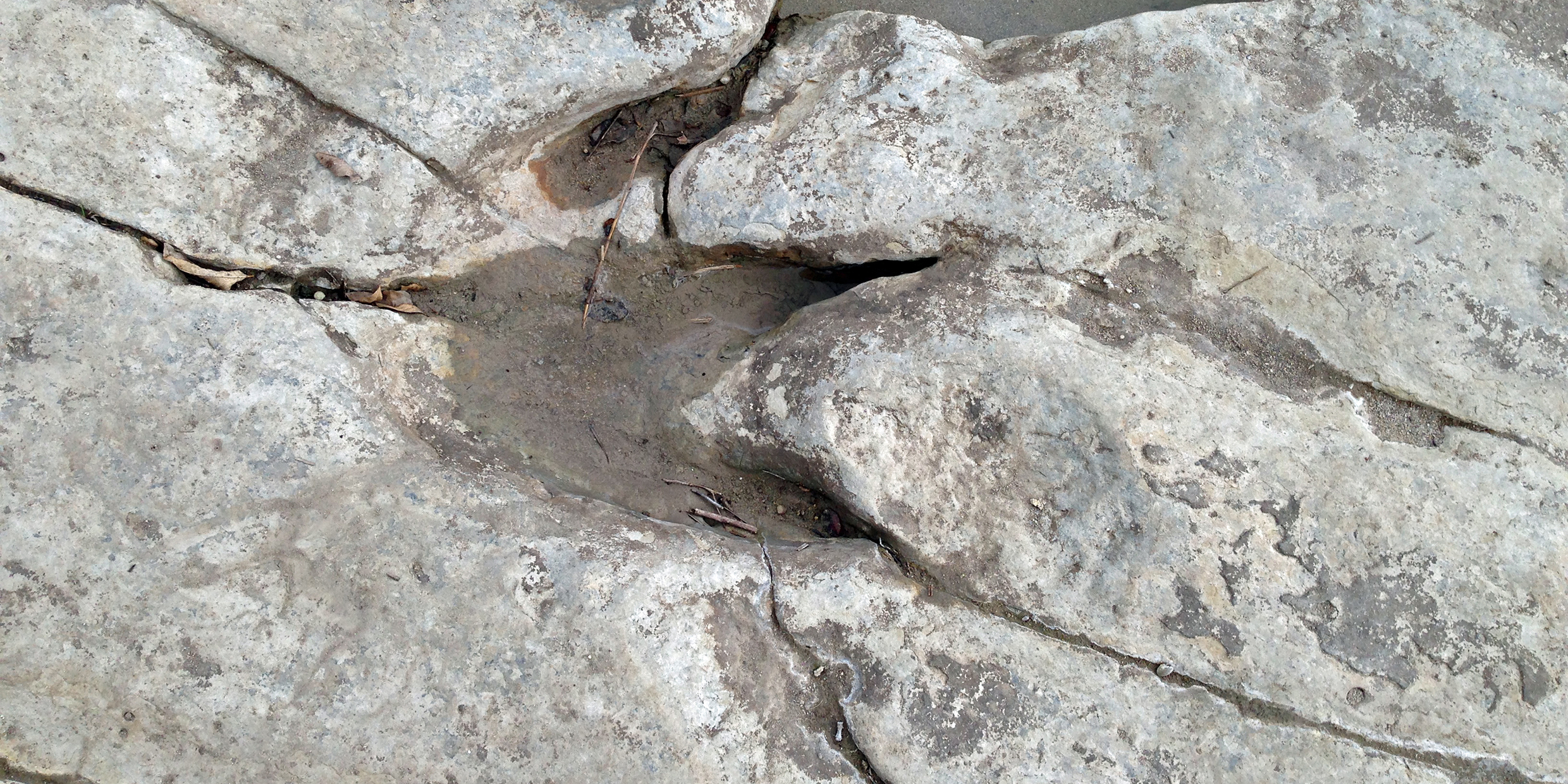Originally published 17 November 1986
Down on the Paluxy River in Texas, there are fossil footprints of human beings in the stratum of sedimentary rock that bears the tracks of dinosaurs. Or so claim the adherents of some fundamentalist religious groups. The Paluxy tracks and similar markings at other sites in the American West, have become one of the centerpieces of the fundamentalist anti-evolution crusade. For a decade, the purported “man tracks” in Texas have been touted by creationists as proof, once and for all, of the falsity of evolution.
The Paluxy River sedimentary strata date from the Cretaceous Period of geologic history, 120 million years ago. Creationists claim the rocks are only thousands of years old, and, they say, the Paluxy River tracks show that humans and dinosaurs coexisted, most likely In the time preceding the flood of Noah.
Of course, there are no human footprints in the Cretaceous rocks of Texas, or an any other rocks that date from the time of the dinosaurs. The purported man tracks have been examined by geologists. Some are not tracks at all, but only erosion features that are typical of river beds. Other, poorly defined “human” footprints are similar to dinosaur tracks in size, pace and step angles. So devastating has been the scientific critique that in recent months some creationists have begun to hedge their bets regarding a human origin for The Paluxy River tracks.
None of this would he worth talking about If it were not for the fact that science is under a growing attack by people who take things like the Paluxy River “man tracks” seriously. In Louisiana the state legislature has mandated that creation science be taught in schools along with evolution. The law has been judged unconstitutional by lower federal courts and is now before the US Supreme Court.
A way of knowing
In spite of setbacks in the courts, fundamentalists maintain pressure on school boards, state legislatures, and textbook publishers to include creation science in school curricula or, failing that, to end the teaching of evolution.
At issue is not freedom of religion. People have the right to believe what they want about how and when the world was made. At issue is whether there is such a thing as creation science that should be taught in our public schools.
Science is not a collection of truths about the world. If I say that “the Earth is 4.5 billion years old,” or that “humans evolved from lower orders of life,” I have made a scientific statement, but such a statement is not itself science. Science is not what we know; science is a way of knowing.
Observation is an important criteria for the validity of scientific truth, but it is not the only criterion. Different people can interpret the same observations differently. The Paluxy River tracks are a case in point. An equally important criterion for truth in science is consistency. What we hold to be true in one area of science must not contradict what is held to be true in another area.
Science is not a smorgasbord of truths from which we can pick and choose. A better image for science is a spider’s web. Confidence in any one strand of the web is maintained by the tension and resiliency of the entire web. If one strand of the web is broken, a certain relaxation of tension is felt throughout the web.
Our belief in the evolution of life through geologic time is based on what we have learned in many other areas of science. Our confidence is assured by the success of the entire ensemble of scientific truths. Scientific truths are tentative and partial, and subject to continual revision and refinement, but as we tinker with truth in science we always keep our ear attuned to the timbre of the web.
Science and nonscience
Fundamentalists use film, video, electronics, computers, and communication satellites to spread the anti-evolution message. Ironically, these technologies are based on the same ensemble of physical principles that lead us to believe that life evolved over eons of geologic time. You can’t tear down one part of the web of science unless you are willing and able to rebuild a structure of understanding that works as well or better than the one you have disassembled. This is what the creationists are unable to do. And this is why there is no such thing as creation science.
There is more at risk in the anti-evolution crusade than a particular view of the origin of the world. At risk is the ability of the next generation of Americans to distinguish science from nonscience. Science is confidence in the human mind to discover some measure of truth about the world. Science is humility in the face of nature’s complexity. And above all, science is a respect for consistency as a hallmark of truth.
In at least one thing the creationists are right. If humans walked with dinosaurs, then evolution is false. And by the same test, much of what we know about geology, astronomy, physics, chemistry, biology, and medicine can be thrown out too.



